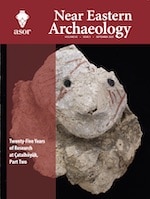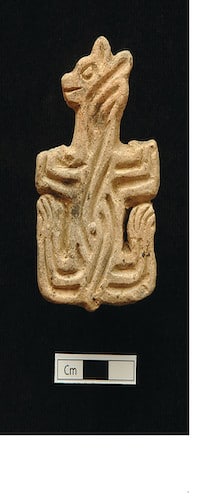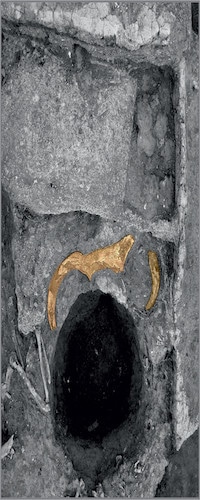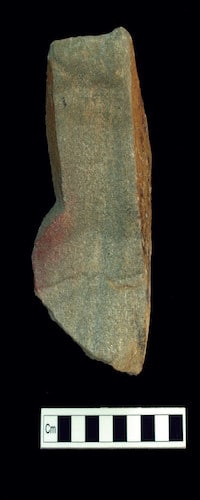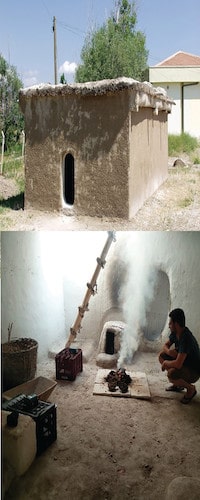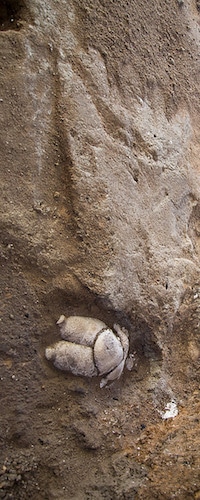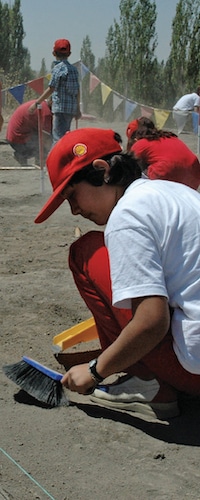
You can receive NEA (and other ASOR publications) through an ASOR Membership. Please e-mail the Membership office if you have any questions.
Pp. 136-145: “Living with Animals: Human–Animal Relations and Society at Çatalhöyük,” by Lindsay Der
Neolithic Çatalhöyük (7100–5950 BCE) is infamous for its sensational and curious material culture. Although the so-called mother goddess figurines have always been a source of great media attention, the vast majority of the visual expressions at the site are not anthropomorphic, but instead centered on wild and dangerous creatures. Many studies have previously considered the Çatalhöyük animal iconography in the context of symbolism and/or religion (Hodder and Meskell ; Stordeur ; Cauvin and Watkins ; Mellaart ). Far fewer works have scrutinized how these materializations speak to the connections forged between people and animals. This article explores the way in which animals were embedded within the social bonds and ontologies of the site through ritual practice. Ritual is not a synonym for religion, but in this study is defined as repetitive, patterned, and symbolic activity that is socially sanctioned (Firth ). In doing so, we can gain new insights into the complexity of the relationship between humans and animals and how this relationship endured across more than a thousand years of continuous occupation.
ASOR Members with online access: navigate to the token link email sent to you (search for “token link” in inbox) before attempting to read this article. Once you have activated your member token, click here to access the above article on The University of Chicago Press Journals’ website.
Pp. 146–154: “Towards the End of the Çatalhöyük East Settlement: A Faunal Approach,” by Kamilla Pawłowska
The Çatalhöyük site produced material from the Neolithic occupation (7100 cal BCE–5900 cal BCE) through the Muslim period, including Bronze Age, Iron Age (Phrygian period), and Hellenistic periods. Twenty-five years of research have allowed us to study various ecofacts and artifacts, including animal and plant remains, human bones, pottery, stamp seals, and figurines. Faunal remains, which are the focus here, have been the subject of intense multidisciplinary research, particularly during the last decade. This has led to a greater understanding of Neolithic farmers’ subsistence patterns in the Anatolian region; the domestication, health and disease in past animal populations; spread of livestock; daily practices of animal food-related activities and management of waste; and of the ecological conditions of the region in which this community operated. Animals were also involved in social practice (Russell, Martin, and Twiss ; Pawłowska ; Pawłowska and Marciszak ; Der this issue) and used as a source of raw material in manufacturing.
ASOR Members with online access: navigate to the token link email sent to you (search for “token link” in inbox) before attempting to read this article. Once you have activated your member token, click here to access the above article on The University of Chicago Press Journals’ website.
Pp. 156–167: “Pigment Use at Neolithic Çatalhöyük,” by Eline Schotsmans, Gesualdo Busacca, Lucy Bennison-Chapman, Ashley Lingle, Marco Milella, Belinda Tibbetts, Christina Tsoraki, Milena Vasić, and Rena Veropoulidou
From the Middle Paleolithic onwards, pigments have been used variably in different social and ritual activities as well as in the expression of symbolism through material culture (e.g., Brooks et al. ; D’Errico ). In the Levant and Anatolia, symbolic practices with pigments became increasingly common in the epipaleolithic and pre-pottery Neolithic periods (e.g., Bocquentin and Garrard ; Goring-Morris, Hovers, and Belfer-Cohen ; Richter et al. ; Baird ; Baird et al. ).
ASOR Members with online access: navigate to the token link email sent to you search for “token link” in inbox) before attempting to read this article. Once you have activated your member token, click here to access the above article on The University of Chicago Press Journals’ website.
Pp. 168–174: “Middens, Waste Disposal, and Health at Çatalhöyük,” by Jesse Wolfhagen, Rena Veropoulidou, Gianna Ayala, Dragana Filipović, Ceren Kabukcu, Carla Lancelotti, Marco Madella, Kamilla Pawłowska, Carlos G. Santiago-Marrero, and John Wainwright
The transition from a mobile hunter-gatherer lifestyle to a settled way of living is one of the most significant processes in human history. There were undeniable benefits to this process, with increased food security and longer lifespans, but there were also negative consequences associated with an increased density of living. At Çatalhöyük we have over one thousand years of continuous occupation from the Pre-Pottery Neolithic to Chalcolithic period (7100–5700 BCE). The settlement changes from a dense agglomeration in its earliest phase, where individual buildings are constructed wall to wall with no gaps or streets between them, to a more open nucleated settlement towards the end of the occupation. Large numbers of people living in a fixed location inevitably leads to the production of large amounts of waste. One of the most significant consequences of these activities is the creation of “pollution,” both in the physical environment, and the decline in air quality.
ASOR Members with online access: navigate to the token link email sent to you (search for “token link” in inbox) before attempting to read this article. Once you have activated your member token, click here to access the above article on The University of Chicago Press Journals’ website.
Pp. 176–181: “Engaging with the Çatalhöyük Database: House at Çatalhöyük (HATCH) and Other Applications,” by Arkadiusz Marciniak, Jacek Marciniak, Patrycja Filipowicz, Katarzyna Harabasz, and Jędrzej Hordecki
Çatalhöyük remains one of the most intensively and meticulously excavated prehistoric sites in the history of archaeology. Two large excavation campaigns, carried out in the years 1961–1965 and 1993–2017, have generated considerable data. A particularly large body of data was accumulated over the twenty-five-year period of excavation and analyses carried out by the Çatalhöyük Research Project. One of the project’s major undertakings was to make all data collected accessible for wider audiences (Hodder ).
ASOR Members with online access: navigate to the token link email sent to you (search for “token link” in inbox) before attempting to read this article. Once you have activated your member token, click here to access the above article on The University of Chicago Press Journals’ website.
Pp. 182–190: “Ethnography, Engagement, Evaluations, and Endings: The Achievements and Limitations of Community Outreach at Çatalhöyük,” by Allison Mickel, Patrycja Filipowicz, and Lucy Bennison-Chapman
Over the twenty-five years of community engagement at Çatalhöyük, local community members played integral roles in the production of knowledge about the site. As workers, as cooks and housekeepers, as ethnoarchaeological consultants, as museum exhibit collaborators, men and women living around Çatalhöyük supported the research team in creating the archaeological record of the site.
ASOR Members with online access: navigate to the token link email sent to you (search for “token link” in inbox) before attempting to read this article. Once you have activated your member token, click here to access the above article on The University of Chicago Press Journals’ website.
